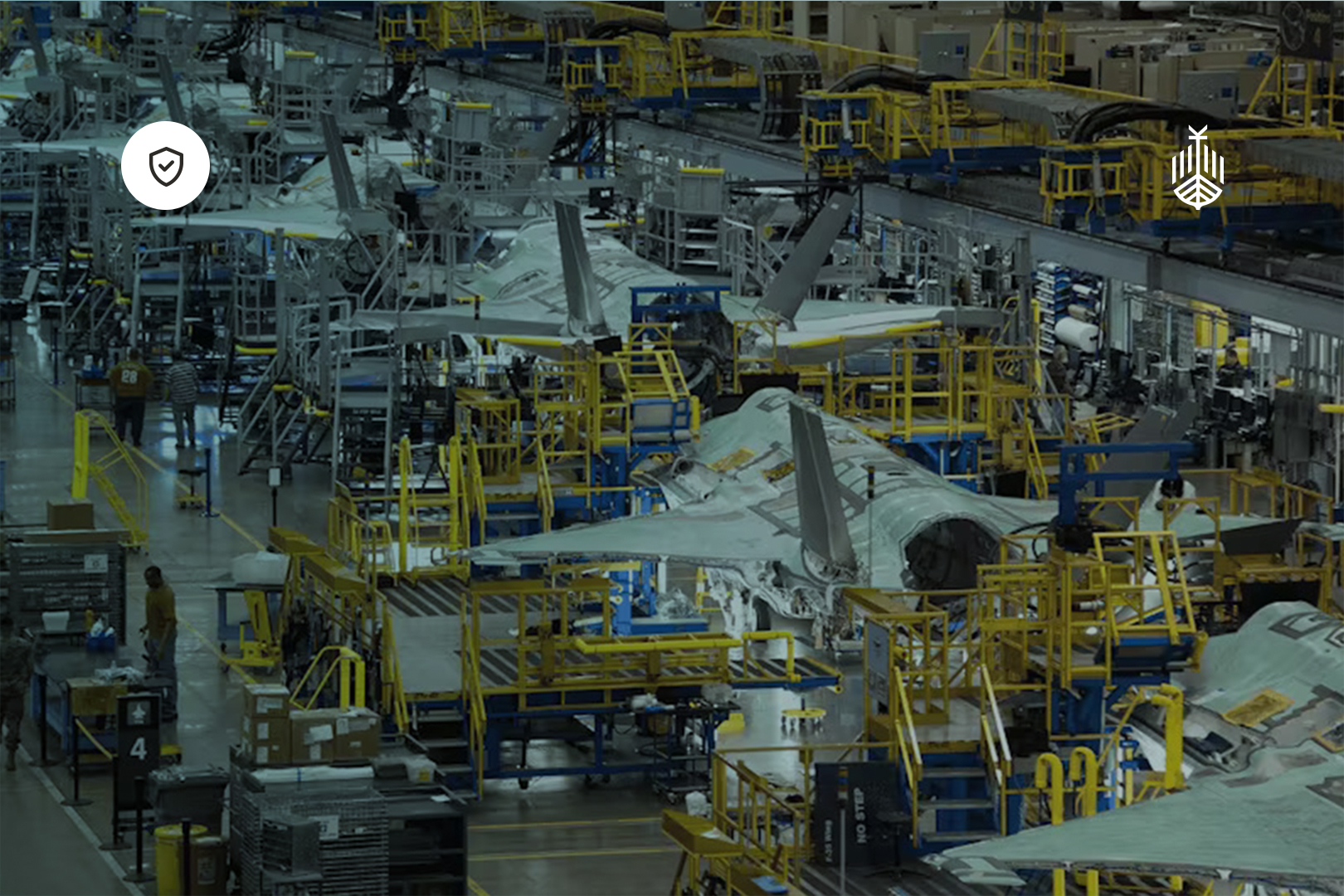From Fiction to Reality: Rise of the Machines
Life can be strikingly prescient in the way it mirrors art. Marvel's fictional Iron Man demonstrates the utility of AI and autonomous combat systems over several movies; evolving from an early exo-skeleton augmenting a single human1 to the coordinated deployment of intelligent robotics2. As an apt metaphor for the current trajectory of military technology, the protagonist's relentless technological innovation further serves as an appropriate model for outpacing adversaries. Continuous improvement in both hardware and software should resonate deeply with those responsible for allied militaries' strategic direction. In an increasingly tense multipolar world, methods for how AI autonomous systems are procured, developed and fielded as part of UK and allied force structures must reflect this. Modern technology must be harnessed and repeatedly adapted to evolving threats to yield significant national security benefits.
Combat Darwinism: Adapting to New Threats
As global dynamics shift, the UK and its allies face daunting challenges. As a result of China's sabre-rattling in the Pacific, Iran and its proxies in the Middle East, and the possibility of further escalation of the Ukrainian-Russian conflict, the USA – which has underpinned European security since WWII – is increasingly likely to find its resources stretched. European militaries will need to fill the gaps. But long-established strategies in Europe, including sanctuary-based operations, uncontested theatre entry, reliable communication lines and logistics, and a reliance on expensive and hard-to-replace hardware, are increasingly in doubt.
Traditional assumptions in force application have been exposed as vulnerable during the Ukraine war, and both sides in the conflict have demonstrated how to impose high costs on an enemy for relatively little expenditure. Low-cost anti-armour and anti-ship missiles, drones that strain complex air defence systems and ubiquitous robots, sensors and long-range fires to harass the front line and stretch supply chains significantly beyond it are highlighting the challenges facing militaries today. Yet European military transformation appears sluggish, especially in terms of adapting to the demands of modern battle management or the deployment of force via remote or autonomous systems. Targeting cycles continue to rely heavily on asynchronous manual inputs, traditional communication methods and incompatible systems. Weapons engagements rely heavily on multiple (fallible) humans cooperating in time and space. Few European militaries boast any autonomous capabilities and none at scale.
The State of European Military Transformation
Reluctance for a Software-First Approach
In an era where personal and commercial lives are dominated by affordable hardware packed with advanced software to augment productivity, European militaries' reluctance to embrace a software-first approach appears increasingly anachronistic. In the UK, recruitment and retention are increasingly matters of public concern, and the average newspaper reader is well aware of equipment shortages and underperformance. Localised computing power, commoditised sensor technologies, intelligent networking, and AI analysis have immense and immediate potential to alleviate these pains. By using these foundational technologies, teams of increasingly sophisticated robotic systems can be controlled by few humans, thereby inverting the traditional people-to-machine ratio. As a result, current capabilities to detect, track and target threats as well as execute actions against them could be significantly enhanced, while operator survivability could be significantly improved. At the right cost-per-output ratio, such systems offer the potential to carry out missions too risky or too resource-intensive to be viable under current practices.
Human-centricity in an AI World
Humans must remain at the heart of decision-making – still contextualising and exercising ethical judgements – if autonomous systems are to be successfully and ethically deployed in lethal engagements, but they will revolutionise capability. With extensive data inputs and subsequent actions supplemented by autonomous sensor-shooter systems, the manual intensity of collecting, processing, moving, and analysing data will be removed. Autonomy and AI should provide more time and more accurate information to make better decisions than current practices, or even place an emphasis on thorough planning to make key decisions a priori for robotics and systems to follow as incidents occur. Digital records offer the potential to make humans more accountable for their actions. Fielding and training with them against bounded problems will be essential to establish the right mix.
Rethinking Defence Investment and Innovation in the UK
Investment and Innovation: a path for the MOD
To maintain its role as a reference military power and deter aggressors, the UK must rethink its approach to defence investment. As far as software, AI or autonomy are concerned, the Integrated Operating Concept 20253, which provides strategic direction for the armed forces, lacks detail. While the concept of deeper integration across departments, domains, and society is relevant, it will not be delivered by more emails and more meetings. Projects in the Equipment Plan4 are heavily hardware-centric, often unaffordable5 and follow traditional procurement processes, which have been criticised as unsuitable6. Affordable autonomous systems bought off-the-shelf might fill some gaps. Such affordability can be assessed on a cost-per-mission basis rather than a cost-per-product basis, especially if mission scope is increased or human capital is diverted to higher value employment. Air defence, wide-area surveillance (from the seabed to space), intelligence and reconnaissance, off-board sensing to protect existing platforms, as well as strike capabilities ranging from deep combat to close-quarter battle, are just some of the missions where AI and autonomy can be advantageous immediately.
Market forces and the defence sector
But not all companies willing to supply to defence can deliver this objective. It takes a combination of talent, capital, and a business plan to supply at scale – including by exports – to deliver capable local defence suppliers. The government cannot be charged with underwriting the whole plan; techno-communism is unlikely to deliver the right results. Despite efforts to foster a vibrant SME community, the MOD still relies on a small number of prime suppliers, with the top ten receiving around 40% of all expenditures and their access to contracts increasingly via non-competitive tendering7. As a capitalist nation, we should strive to create market incentives that attract and retain private investments to augment the taxpayer's contribution to the defence of the realm and to make the UK defence industry more competitive. The MOD can't ignore traditional procurement and direction on certain capital-intensive and specification-heavy projects, but it should aim to foster a parallel innovation-friendly environment.
Emulating success: where and why is it working?
In recent years, the US has seen the results of such incentives; US private capital into defence has risen from less than $16bn in 2019 to an enviable $33bn in 20228 (half of the UK MOD’s annual budget). The challenge for the UK is harder though; throughout Europe the tech sector lacks the dynamism and investment seen in the US market – as evidenced by the lack of multinational tech companies – and defence is less attractive than sectors like energy, health or transport to local technologists or venture capitalists9. The MOD needs to catch this US wave and incentivise those willing to make a bet on defence technology to do so here. With a budget roughly 9% that of the US DOD, it might demonstrate it is willing to spend large sums on software systems, buying best-in-class capabilities. It would attract more companies that have invested heavily in developing baseline products and architectures and encourage them to indigenise or adapt them to the UK's needs. Such investments are reinforced by the availability of talent in the UK and our military and cultural alignment with the US - the world's largest consumer of defence products and the primary export market.
If this has been the plan, the past few years have proven to be a rocky start, as several highly capitalised, tech-savvy companies have left or reduced their operations in the UK due to high operating costs and difficulties in generating sustainable revenue, let alone profits. In part due to the MOD's unpredictable medium-term focus, kaleidoscopic procurement processes, and apparent preference for traditional suppliers, several innovative, non-traditional companies have struggled to gain traction. The status quo simply rewards companies who are best at ‘playing the game’, leading to suboptimal outcomes for UK armed forces.
To create change, the MOD should overtly emphasize the importance of AI and autonomous systems and establish meritocratic competitions with meaningful rewards. This is what the US Replicator10 initiative has aimed to accomplish despite the complexity of DOD procurement. We should emulate it in the UK, setting up competitions that focus on software development, frame the mission, environment, and desired outcome, and take place within commercially reasonable timelines. Moreover, these efforts should be recompeted regularly and predictably, with increasing mission complexity and commensurate contract values. This approach would signal to entrepreneurs and technologists that the UK defence sector is a viable and lucrative field for innovation and that AI autonomous systems are set to become and remain a serious and potent element among our military capabilities.
Featured image © REUTERS
References
- Iron Man - Cave Battle Scene - MARK 1 - Iron Man (2008) YouTube. Published online April 30, 2017. Source »
- Marvel Iron Man 3 The House Party Protocol. YouTube. Published online November 22, 2021. Source »
- Ministry of Defence. Integrated Operating Concept. GOV.UK. Published September 30, 2020. Source »
- The Defence Equipment Plan 2022-2023., UK Ministry of Defence. Crown Copyright 2022 © Source »
- The Equipment Plan 2023–2033 (Summary)., Ministry of Defence. Source »
- It is broke and it’s time to fix it: UK’s defence procurement system. Defence Committee. Published 2023. Source »
- Ministry of Defence. MOD trade, industry and contracts: 2023. GOV.UK. Published September 28, 2023. Source »
- Financial Times. Silicon Valley VCs rush into defence technology start-ups. Published June 2023. Source »
- Europe | Dealroom.co. Published December 29, 2023. Source »
- Defense Innovation Unit. Implementing DoD Replicator Initiative at Speed and Scale. Published 2023. Source »














